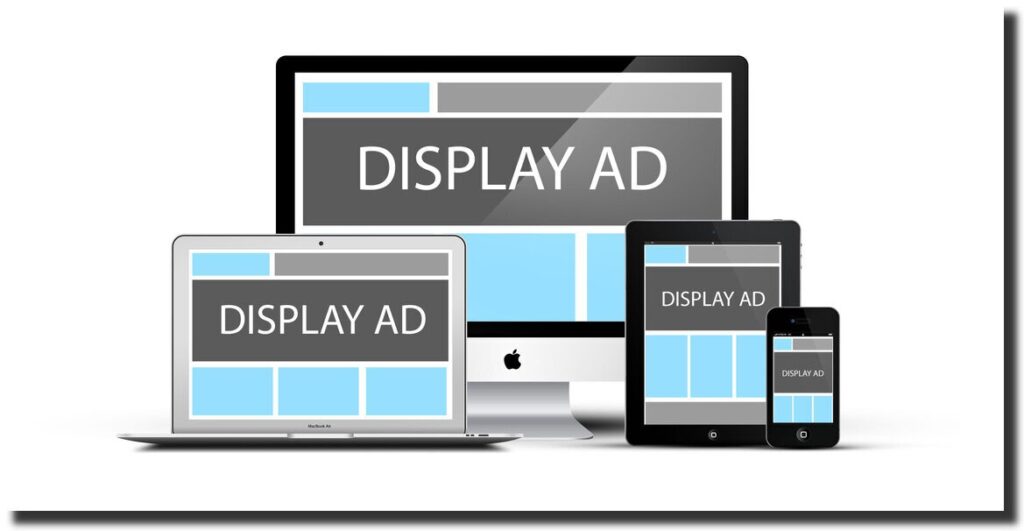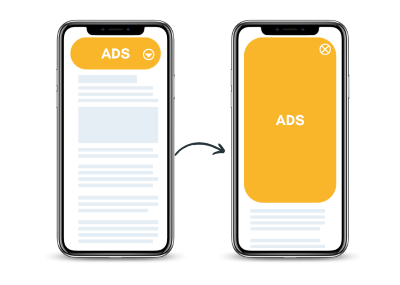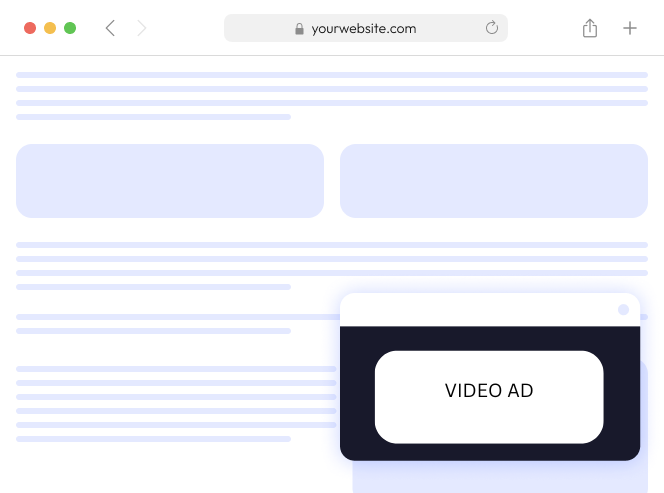Recent research indicates that in 2025, less than half of mobile display ads across the US were rich media. $31.54 billion.
Rich media ads are often found to be more effective than other ad formats, such as traditional display ads. These ads can expand, float on the page, or play videos.
What Are Rich Media Ads?
Rich media is a term used to describe digital advertisements, which refers to ads that contain more interactive content, such as audio, video, or animation.
Rich media Ads boost engagement and decrease “banner blindness” compared to other advertising formats. For example, if display ads are usually static elements like images or text and images, then ads can be more engaging.
One of its primary objectives is to boost the user’s engagement level.
Types of Rich Media Ads
There Are Three Kinds of Rich Media Advertisements
- In-page ads
- In-stream ads
- Out-of-page ads
A closer look will be taken at these high-quality Ad examples.
| In-page Ads | In-stream Ads | Out-of-page Ads |
| Attention-grabbing banner ads that appear in various sections of a webpage, such as in a billboard, leaderboard, or sidebar position. Outstream video ads are also classified as in-page ads. | Video ads that play before (pre-roll), during (mid-roll), or after (post-roll) existing video content. | Ads triggered by user actions, such as pop-ups and expandable ads. |
Types of Rich Media Ad Formats
Most commonly used formats for rich media advertising.
Display Ads
This ad format is among the most popular used in online advertisements. Most of the time, displays with rich media (banner ads that are rich media) are based on images, not text-based. These interactive ads can be displayed on websites’ billboards, leaderboards, or in the sidebar. They typically have higher participation and CTR (click-through rate) than regular display advertisements. Rich media, such as animation, displays its effects within the banner and not outside.

Expandable Ads
This kind of ad will expand in size if the user clicks on it. They are time-based, meaning the advertisement will be retracted after a certain period.

Interstitial Ads
An interactive format for full-screen ads is displayed when a user navigates to another page. Interstitial ads offer a variety of user experiences, reduce “banner blindness,” and increase the overall engagement of ads. This type of ad offers higher CTRs than banner ads and can also provide animated content. Find out more about interstitial ads.

Videos Slider Ads
They slide or fade in towards the end of the page and stay there as scrolling.Publishers typically use them to increase audience engagement and add advertising space without affecting existing space. It would help to use designs based on third-party codes to display slider ads. Advertisers often provide outstream video advertisements, but they can also offer them as instream solutions for video ads.

Features of Rich Media
Certain features highlight the differences between rich media ads and other ad formats.
- Dynamic, interactive, and incorporates audio elements for video, images, and animations. It is a different approach to conventional display ads that usually contain static aspects.
- For instance, the user must take action to watch the film or even to de-mute the audio. This results in a better experience for the user.
- Typically, rich media ads are more effective than regular display ads. In the case of rich media, the file size could be as high as 200KB.
- Rich media offers precise tracking metrics to monitor user interaction, and advertisers recommend tracking engagement using rich media ads.
Benefits and Drawbacks for Publishers
Benefits
Revenue from advertising has increased due to the high CTRs and CPMs.
Enhance the user experience by enhancing interaction with ads and engagement.
They are more quantifiable and can be scaled. For instance, if you’ve implemented rich media ads, you’ll notice the number of people who’ve viewed the ad and the time they engaged. The process of analyzing rich media reporting metrics will be explained. If you’re using a monetization service and their dashboard, you’ll only be able to see the information available through their dashboard.
It makes the website more appealing to visitors in terms of ads.
For instance, in Google’s case study on Audi, viewers typically spend about 30 seconds on the ad due to advertising with rich media.
Drawbacks
If a publisher shows intrusive ads, such as pop-up advertisements, some users may find it unpleasant and quit the site. Setup ads can assist you by providing rich, non-intrusive media ads that can be adapted to your website.
Since these ads may be heavier, they could take a while to load. An unreliable internet connection and a monetization partner who must provide efficient ad loading (like lazy loading) are relied upon.
Final Thoughts
Rich media advertisements are the best way to go when you want to display programmatic ads. Even regular display ads with a small CTR could be more effective with a lower bounce rate and higher engagement. Although rich media may sound like a great idea for your website, it must be handled carefully and precisely, including caps.

